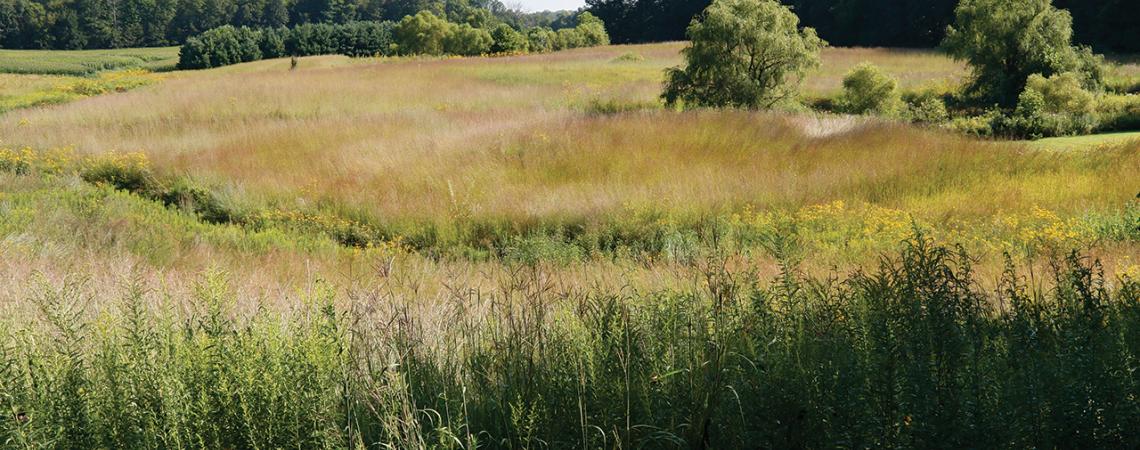Photo by Chip Gross
North America’s prairies once stretched from the foothills of the Rocky Mountains east into western Ohio, a staggering 1 million square miles or more of native grasslands that covered a third to nearly half of our country.
But what took millennia to develop disappeared in only half a century. The transformation began in 1833, when John Lane Sr. created the polished-steel, self-scouring plow, which could penetrate heavy prairie soils. A fellow blacksmith then improved upon Lane’s original design and marketed the new plow aggressively. That second blacksmith was John Deere.
By 1852, John Deere’s factories were producing more than 10,000 plows per year. By the beginning of the 20th century, the vast stretches of America’s original virgin tallgrass prairie were essentially gone, converted to cropland.
Bringing back Ohio’s ecological past
Guy Denny, a member of Consolidated Cooperative in north-central Ohio, has been actively involved for decades in preserving and promoting the small vestiges of prairie remaining in the Buckeye State.
Denny, former director of the Ohio Biological Survey; retired chief of the Ohio Department of Natural Resources, Division of Natural Areas and Preserves; and current president of the Ohio Natural Areas and Preserves Association, is considered one of the Midwest’s leading naturalists and prairie experts. He has gone well beyond simply advocating for the protection of prairies, though; he’s created his own — a 24-acre stretch on his property near Fredericktown, in rural Knox County.
“It’s taken me about 20 years to develop, and I’m still working at it,” Denny says. “To get started, I brought in seeds and plants from prairies across Ohio.”
Now growing in profusion on Denny’s prairie are prairie dock, gray-headed coneflower, and numerous varieties of grass and forbs, some reaching heights of 8 to 10 feet. The plants, in turn, attract wildlife — particularly various species of butterflies, bees and other pollinators. “I also regularly see raccoons, deer, coyotes, foxes, and an occasional mink. Prairies are a real mecca for wildlife,” he says.
Making way for new beginnings
One of the essential management practices required for maintaining a tallgrass prairie is periodic burning. “Fire burns back the woody vegetation that’s constantly trying to invade the prairie and eventually take it over through natural succession,” he says.
He burns his prairie annually during early spring. It’s truly spectacular, with orange flames leaping 30 feet high as they roar across the previous year’s growth of highly combustible dead grasses and other prairie plants.
“Fire recycles the smothering blanket of dead plant stems and turns them into useful nutrients,” Denny says. “The fire also stimulates greater growth and seed production in the new prairie plants once they begin growing again in spring.”









